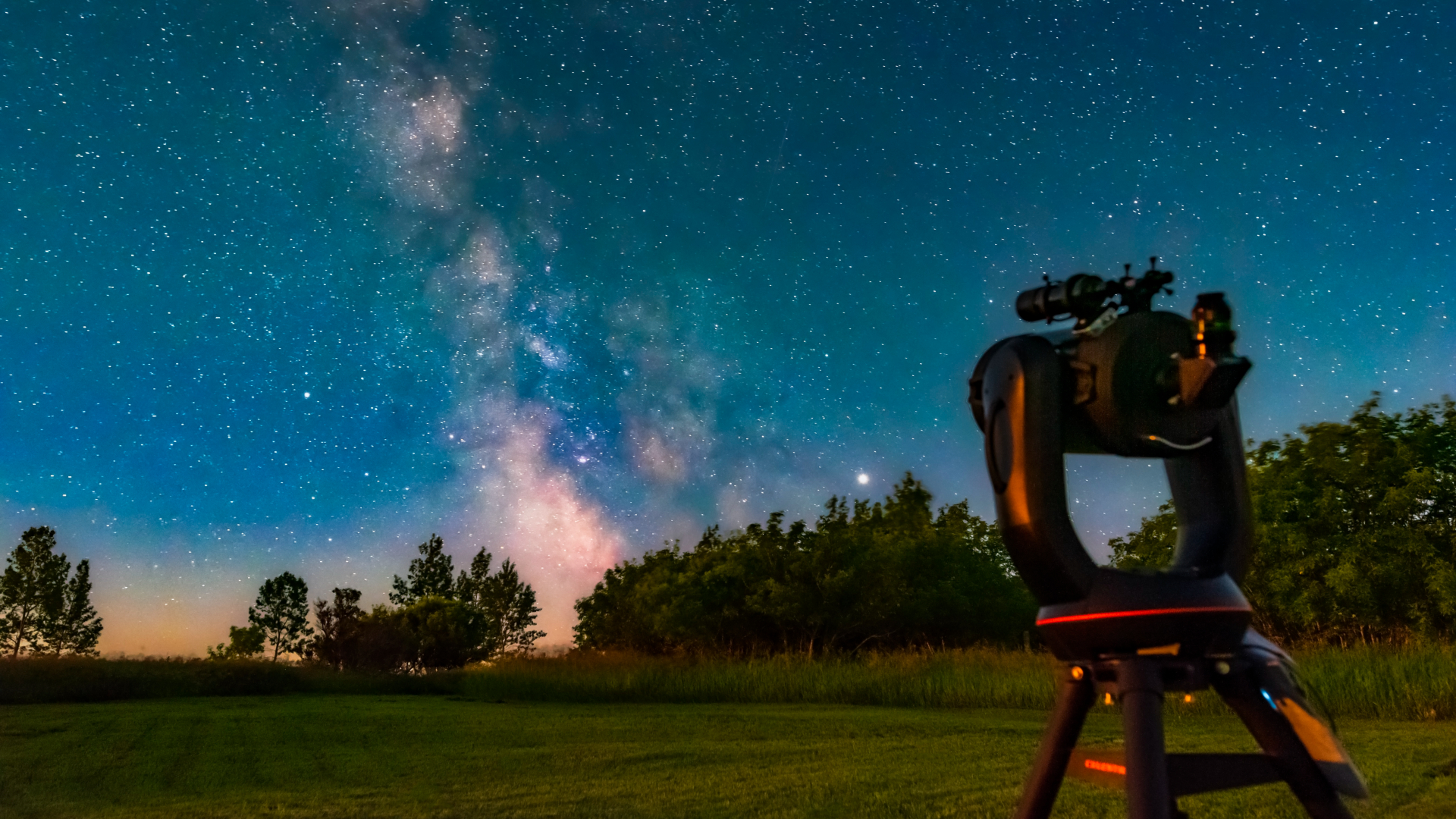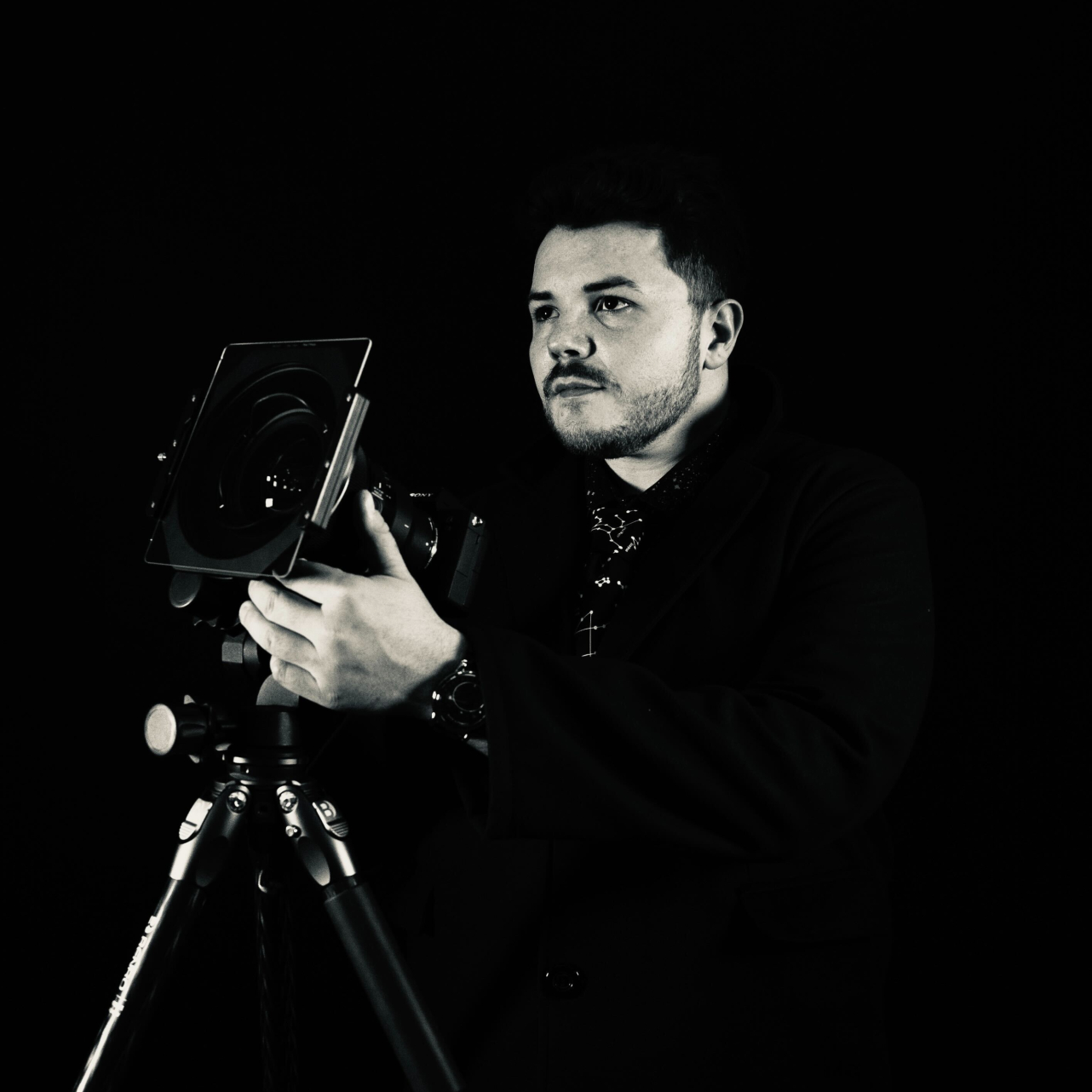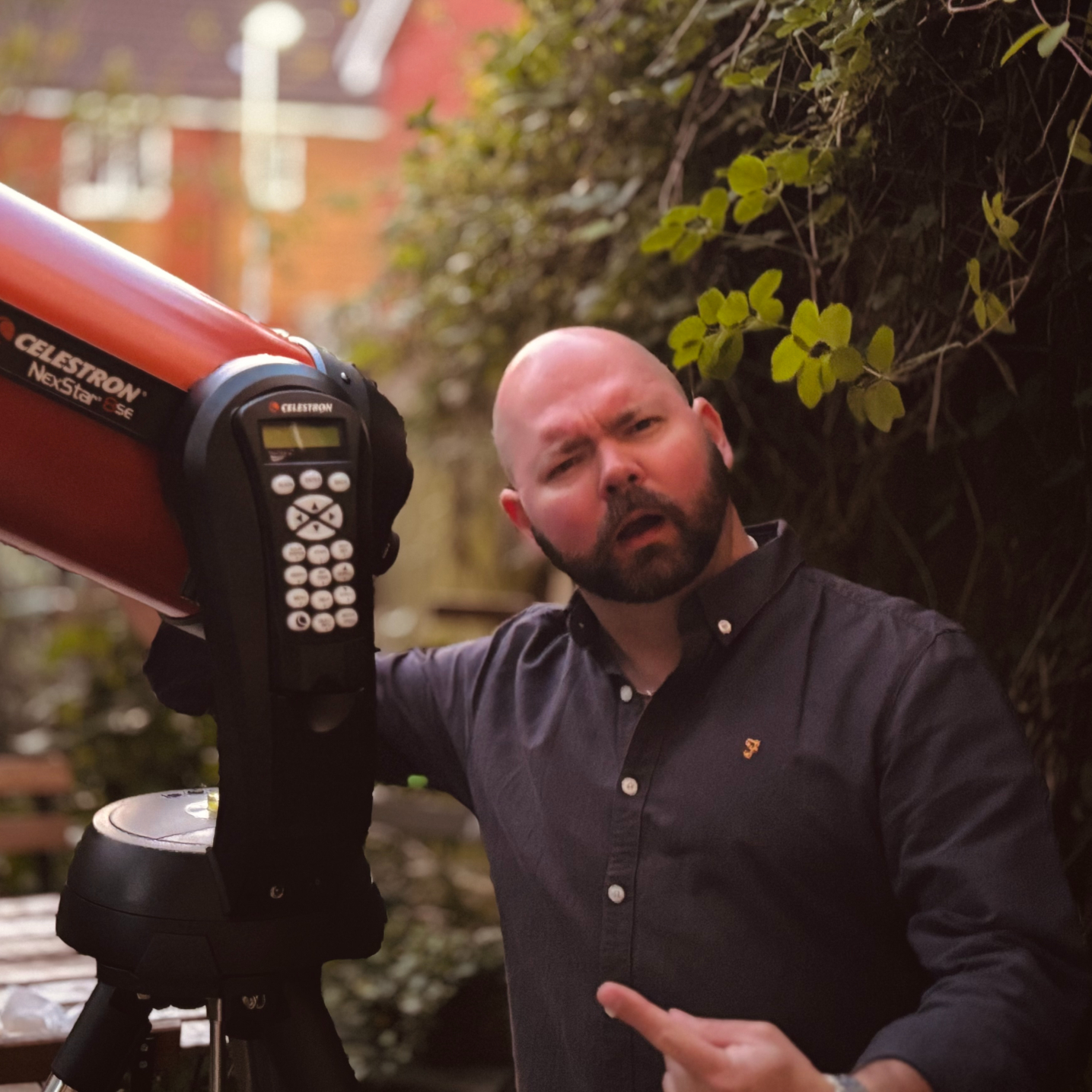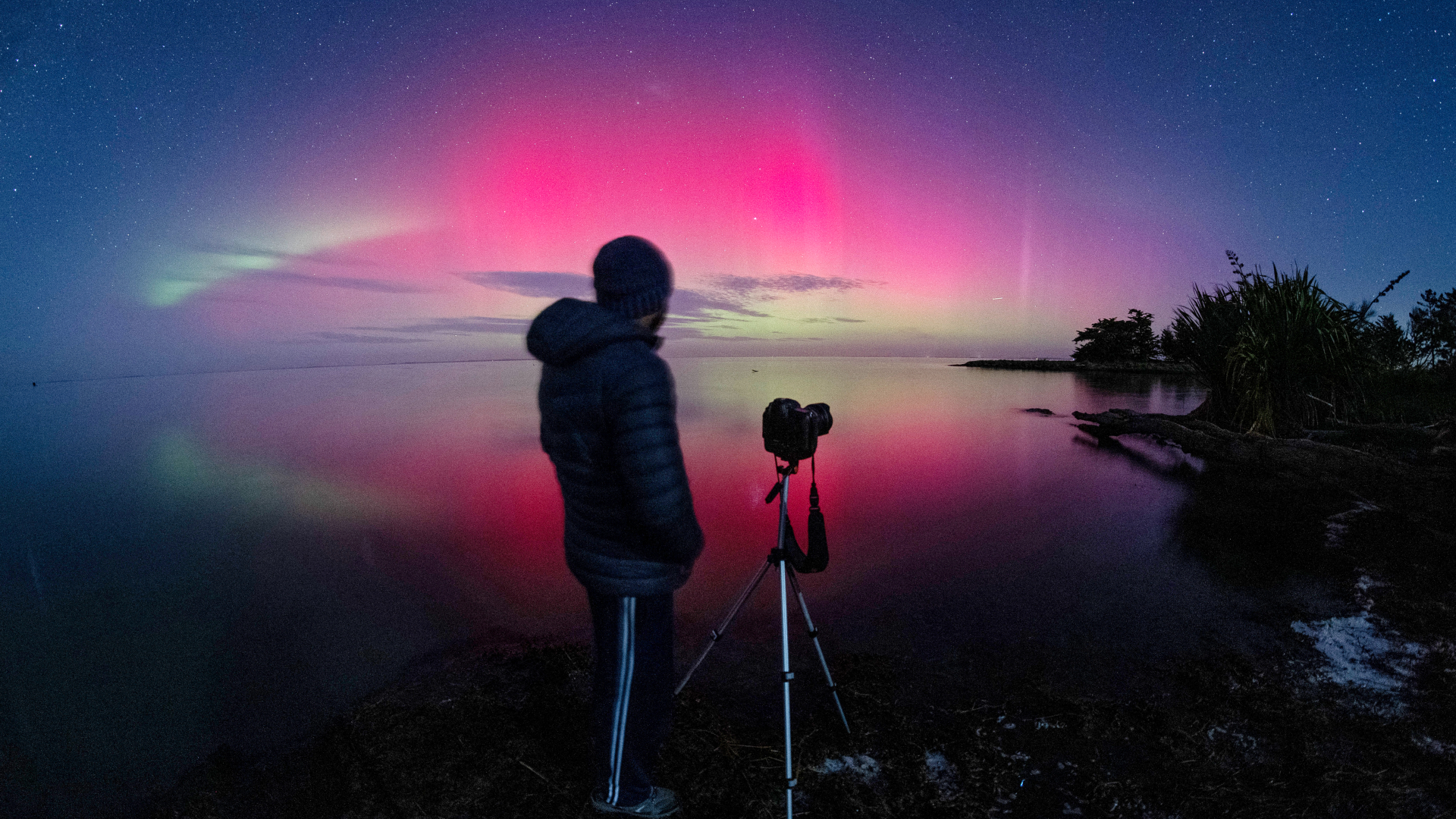Expert advice for new stargazers: How to begin your amateur astronomy journey
Astronomers and expert stargazers share their top skywatching tips for beginners

There's no better time than now to embrace the majesty of the night sky to begin a lifelong journey with amateur astronomy that will have you exploring everything from twinkling stars and constellations to roving planets, distant galaxies and countless other astronomical wonders.
However, there's no denying that getting started with stargazing — and the myriad tools used to explore the night sky — can be a daunting experience for newcomers. Well, we've got you covered! Read on to discover a collection of tips and tricks from expert stargazers that will ensure that your first steps into the world of amateur astronomy are as smooth and enjoyable as can be.
Check out our day-by-day guide to the night sky to stay up to date with major stargazing events. You can also see our picks for the best telescopes and best stargazing binoculars if you're looking to upgrade your equipment. You also may want to peruse our roundup of the top astronomy apps for navigating the stars!
Expert tips for new stargazers
Ed Bloomer, senior curator at the Royal Observatory Greenwich
Space.com: What's your best advice for amateur astronomers?
Bloomer: It is best to start with a little naked-eye astronomy: see if you can pick just something out at first, and build from there, over time. Try to identify a constellation or two in relation to each other, and try to spot them over the course of a couple of nights to start building a bit of a mental map of the sky.

Ed Bloomer is the senior curator at the Royal Observatory Greenwich; he has a doctorate in gravitational wave data analysis.
Try to find a particular transitory thing, like a planet, and note how it changes position relative to the stars — or another planet, or the moon — over a few nights. Start small and ramp up, rather than trying to do everything at once.
Follow your interests. It's much easier to pursue what you're curious about than attempt to develop some encyclopaedic knowledge of things before embarking. There are loads of resources online and others [who are] interested in the same thing. Having a chat with someone else who started their journey before you is always good!
Breaking space news, the latest updates on rocket launches, skywatching events and more!
Coping with the cold and the dark
It's generally going to involve you being outside, in the dark, possibly for quite a while and perhaps cold, so treat it like any outdoor pursuit. Hat, gloves, torch [flashlight], comfortable shoes and a thermos of hot tea are some of a stargazer's most valuable pieces of equipment. Maybe even a little folding camping chair?
Also, patience. And a willingness to call it a day without being discouraged when clouds spoil your view!
Space.com: What's a common mistake stargazers make when they're first starting out?
Bloomer: I think the most common mistake is not taking time to adjust to the dark — or to adjust, then ruin it by staring at your phone. It takes 20 to 30 minutes for eyes to become optimally sensitive to the dark, so a quick glance at the night sky isn't going to reveal much. Movies tend to present the night sky as this poster-bright display of light beautifully balanced with the characters illuminated in the foreground, but the sky is dark, and you have to allow yourself the time and concentration to really let it reveal itself.
Gianluca Masi, founder of The Virtual Telescope Project
Space.com: What's your favorite memory from your early stargazing days?
Masi: I've so many fond memories from the old days when my interest in astronomy started, late in the '70s. I remember with emotion the sudden discovery of the starry night panorama. At some point, I saw it and I fell in love with its wonders, to the point I decided to become a professional astrophysicist, intensively working both on research and science communication, eventually creating The Virtual Telescope Project in 2006.
I'm always very happy when I see people starting with the same passion, and I love sharing with them some advice, after almost half a century of stargazing.
The importance of patience

Gianluca Masi is a professional astronomer and founder of The Virtual Telescope Project, which provides access to several robotic telescopes, along with special events and other scientific outreach initiatives.
Space.com: What are your best tips for amateur astronomers?
Masi: To me, the most important keyword here is patience. Exploring the night sky [and] learning about its many routes requires time. Yes, today, we have many amazing tools supporting and even enriching the experience, but there are no shortcuts.
Take your time to familiarize with some apparently easy, but important points like orientation and star recognition, possibly using a classic star map on paper, as this makes you more confident with the things behind the scene. Take some time to note the slow apparent motion of stars while our home planet spins around its axis, [and] enjoy the subtle, but amazing details, like different colors and brightness among the stars.
"Always find the time to observe with your very own eyes"
The time you will put in will pay back with experience and confidence with the night sky.
Space.com: How can stargazers foster their passion over the long term?
Masi: For sure, at some point you will want an astronomical telescope, and you will even want to take pictures of those cosmic treasures. That is fantastic, but take those steps only once you [are] familiar with the night sky. That way, you will be able to point [at] this and that, knowing where to go to see them. You would buy a car after learning about driving and places worth seeing; the same, for me, is true with the night sky. This will help also in keeping this passion alive.
And when you master observing and imaging through advanced telescopes, always find the time to observe with your very own eyes. This will foster your interest in astronomy, supporting the emotional side of this adventure, which is very important, decade after decade.
Robert Lunsford, fireball report coordinator, newsletter editor and treasurer at the American Meteor Society
Space.com: What equipment do beginner stargazers need?
Lunsford: For anyone interested in the night sky, I would suggest learning the constellations first. The only thing you would need is a reference book displaying the constellations. If [you find yourself] wanting to go beyond naked-eye sightings, then an inexpensive pair of binoculars will reveal the star colors, plus the brighter star clusters. Binoculars offer a wide field of view so that it is easy to find objects listed within each constellation.
The trick with telescopes
Space.com: What should amateur astronomers know about beginner telescopes?
Lunsford: There are objects that are too small or too faint to be seen in binoculars that a telescope can reveal. The only problem with using a telescope is the small field of view compared to binoculars. Therefore, a sighting scope with crosshairs is a big help in finding objects in a telescope. Most inexpensive telescopes are equipped with poor sighting scopes that are practically worthless. The lens in a sighting scope needs to be at least 1 inch [2.5 centimeters] in diameter to be useful.

Robert Lunsford is the fireball report coordinator, newsletter editor and treasurer at the American Meteor Society, one of the leading sources of information on meteor showers.
I would advise people to purchase refractors as a first scope. These telescopes are ready to use right out of the box, and there is no need to collimate a mirror, which is often out of alignment in reflectors. Avoid using high-power eyepieces at first, as their field of views are tiny and the images are not as sharp as using low powers. Any eyepiece with a focal length in excess of 20mm is fine for low-power views.
Lastly, a sturdy mount is a must for successful observing. Inexpensive mounts will wobble in the slightest breeze, making observing impossible.
Josh Dury, award-winning astrophotographer
Space.com: What's your best advice for skywatchers who are first starting out?
Dury: When taking your first views of the distant universe, I would advise not to go for the most expensive equipment first. The experience is about learning the basics of telescopes, as well as cameras, to familiarise oneself with the terminology and operation of features and additional accessories. Once you begin to learn how they work and see your first celestial objects, then look to upgrade your equipment.

Josh Dury is an award-winning landscape astrophotographer and author of the book "52 Assignments: Night Photography" (Ammonite Press, 2025).
I would also advise you to join your local astronomical society. Not only do you meet groups of likeminded people, these are great meets to exchange and share your knowledge. A core value where we learn to share the night sky. Space is for everybody.
Weather is, of course, a challenge. I would always vouch for more than one weather forecast when looking for your next clear sky. Look at multiple models to check if the sky is clear sometimes, and [you] may need to observe at the last minute when the clouds part.
"Go to your local book sellers and look for physical guides"
When familiarising yourself with the night-sky, do not rely on just online resources. Go to your local book sellers and look for physical guides. They contain accurate, bite-size pieces of information to aid in your astronomical endeavour. Not only can you take them with you on the go; they are also designed to be used with red torches [flashlights] to preserve night vision.
When going out with either your camera or telescope, use a red torch. This wavelength of light preserves your night vision. So even when operating a red light, you will be able to see many stars, opposed to white light, where it will take 20 minutes for your eyes to [adapt to the] dark.
Editor's note: If you would like to share your astrophotography with Space.com's readers, please send your photo(s), comments, name and location to spacephotos@space.com.

Anthony Wood joined Space.com in April 2025 after contributing articles to outlets including IGN, New Atlas and Gizmodo. He has a passion for the night sky, science, Hideo Kojima, and human space exploration, and can’t wait for the day when astronauts once again set foot on the moon.
You must confirm your public display name before commenting
Please logout and then login again, you will then be prompted to enter your display name.


